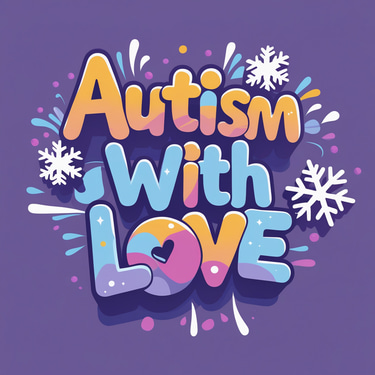Variety of Life - a Snowflake
Snowflakes. Each one is unique, beautiful, and shaped by their own experiences, biology, and environment. Like snowflakes, no two are alike, and their individuality is their strength. Yet, just as snowflakes are delicate, so too are these children often misunderstood...
2/5/20253 min read
Snowflakes. Each one is unique, beautiful, and shaped by their own experiences, biology, and environment. Like snowflakes, no two are alike, and their individuality is their strength. Yet, just as snowflakes are delicate, so too are these children often misunderstood, requiring a gentle touch and a willingness to see beyond the surface. By drawing this comparison, we can celebrate their uniqueness while addressing misconceptions, including the negative connotations sometimes attached to the term "snowflake."
I always felt like puzzle pieces are a .... standardized way of visualizing children on the autism spectrum. They aren't a game that can be put away or only right for one scenario. No, it's too limiting.
Snowflakes are formed under specific atmospheric conditions, their intricate patterns shaped by temperature, humidity, and other environmental factors. Similarly, autism is a neurodevelopmental condition influenced by a complex interplay of genetics and environment. While scientists have identified certain genes associated with autism, it’s clear that every autistic child’s brain develops uniquely, much like the endless variety in snowflake designs.
Autistic children often possess exceptional strengths—heightened sensory awareness, unique problem-solving abilities, or deep focus on their passions. However, these traits are paired with challenges, such as difficulties with social communication or sensory processing. Recognizing these dualities helps us see the complete picture: their individuality is a result of their unique “formation process,” just as every snowflake’s crystalline structure tells the story of its journey through the clouds.
One of the most fascinating aspects of snowflakes is their variety. Each one contributes to the beauty of a winter’s landscape, just as each autistic child adds to the richness of human diversity. Some excel in mathematics, others in art, music, or technology, while some may communicate in ways that challenge conventional expectations. It’s this diversity that makes their presence in our world so valuable.
Yet, this uniqueness often comes with societal challenges. The world’s pace and norms can feel overwhelming for autistic children, much like how a snowflake might be crushed underfoot in a bustling city. By fostering understanding and accommodations, we create an environment where they can thrive, contributing their distinctive beauty to the collective whole.
The term "snowflake" has, in recent years, been used pejoratively to describe individuals perceived as overly sensitive or fragile. Applying this term dismissively to autistic children is not only unfair but also deeply harmful. Autistic children are not fragile in the sense of weakness; they are sensitive because their sensory and emotional experiences are often more intense than those of neurotypical individuals. This sensitivity is a testament to the complexity of their perception, not a flaw.
Moreover, the resilience of autistic children often goes unnoticed. Like snowflakes accumulating to form glaciers, these children demonstrate remarkable strength when supported by understanding and compassion. They navigate a world that often feels overwhelming, adapting in ways that require immense courage and perseverance.
When we look at snowflakes, we marvel at their intricate designs, their delicate edges, and the way they shimmer in the light. What if we approached autistic children with the same awe and curiosity? Rather than focusing on their differences as deficits, we can view them as variations that enrich the human experience.
This shift in perspective also involves rethinking how we support them. For example, just as snowflakes thrive in specific conditions, autistic children flourish in environments that respect their needs. This might mean creating sensory-friendly spaces, using clear and consistent communication, or offering opportunities to pursue their interests. By doing so, we honor their individuality and enable them to reach their full potential.
However, challenges persist. Many autistic children face difficulties in a world not designed for their needs. Sensory overload, communication barriers, and societal stigma can create significant obstacles. Recognizing these challenges does not diminish their strengths; instead, it highlights the importance of creating inclusive environments that allow them to thrive.
Embracing the Snowflake Metaphor
By embracing the snowflake metaphor, we can counter negative connotations and promote a more compassionate understanding of autism. Snowflakes are not weak because they are delicate; they are strong in their collective ability to transform landscapes, from blanketing a field to forming glaciers that shape mountains. Similarly, autistic children have the potential to transform our world when we appreciate their uniqueness and provide the support they need.
Parents, educators, and society as a whole have a role to play in this transformation. Just as we protect snowflakes by marveling at their beauty and creating conditions for their survival, we must nurture autistic children by celebrating their individuality and addressing their challenges with empathy and respect.
Autistic children are like snowflakes—unique, beautiful, and transformative. By shifting our perspective and embracing their individuality, we can move beyond stereotypes and create a world that values their contributions. Let us marvel at their intricacies, honor their resilience, and support their growth, for in doing so, we enrich not just their lives but our own. Just as no two snowflakes are the same, every autistic child holds a story that deserves to be seen, heard, and celebrated.
